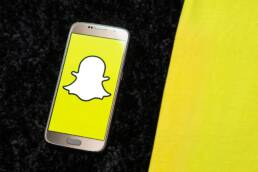Stop spending money on ineffective, expensive higher ed PR campaigns. Adopt paid search and dig deep into these higher education marketing trends for 2017, and use strategies that work.
The 2017 marketing trends are all about diving into the most current ways and formats for engaging with prospects. So what’s the climate like right now for reaching student prospects? It’s all about social media and video.
You need to allocate ample amounts of your marketing budget to digital ad spending. A September 2016 report from eMarketer shows that by the end of 2017, U.S. digital ad spending will reach $72.09 billion, representing 36.8% of U.S. total media ad spending – surpassing TV ad spending. Your higher education marketing strategies must include a paid digital ad strategy.
And you need to be where your audience is; the demographics you need to target are targeting are constantly on Facebook, Instagram and Snapchat – engaging in large part with video. So saddle up and get your messages on those platforms in formats that resonate most with your target audience.
In recent years, colleges and universities have found plenty of money and reasons to pursue aggressive—and costly—PR campaigns, many of which are simply not that effective. One study indicates that schools with separate marketing departments spend an average $232,441 for PR. Higher education institutions can be reluctant to adopt new digital marketing and PR strategies.
So if you’re in higher education marketing and you have a say in how your department spends money, this blog post is for you. If you’re tired of spending this kind of money on marketing without reaching your target audience and getting the results you want, it’s time to try connecting with potential students using these effective – and inexpensive – marketing tools.
While the two giants of digital advertising, Facebook and Google, are solidifying their positions as market leaders in the online ad space, Google still dominates the market, pulling in earnings from PPC ads as much as all other platforms combined. And if you’re trying to get your brand and message out to potential students who don’t know about you, be prepared to pay to play in the digital space. The most innovative marketing organizations all agree that paid search is king this year – you need to pay to get your message seen.

So if you have a Google paid search budget, the next question is: how should you spend it when it comes to Google ads for higher education marketing?
- Simplify the entry level into your conversion funnel. Make sure you have a compelling ad with a strong call-to-action (CTA). In this CTA, be sure to get potential students’ contact information in a simple landing page form (we emphasize “simple”). Then connect with them later with additional “teasers” when they are a bit deeper in the conversion funnel.
- Remarket frequently. The conversion funnel for higher education is a long journey. Prospective students search for some time before making that very important choice. Unless your school is exclusively bidding on branded keywords you’re your school’s name is extremely popular – prospects who see your ads will still need to be educated about what you offer. Make your ad copy awesome, and convince them to click on your ad instead of your competitor’s. They click, but don’t convert. So frequent remarketing helps your target audience remember your name and reminds the how awesome you are, and that you’re interested in them. And hopefully, they apply and become a future student.
- Budget appropriately. Budget in a way that reflects your enrollment periods, application periods, and more. Typically, heaviest web traffic for higher education happens in August and January.
- Use ad extensions. Ad extensions give your ad more prominence on the search results page, benefiting your ad campaign by improved visibility and more value. Prospective students learn more about your campus or in other ways interact with your ad.
Use sitelinks to highlight various course offerings; add a phone number so people can call for more information; incorporate reviews that share positive feedback about the institution.
Facebook ads will also continue as a power leader for higher education marketing in 2017. Facebook managed a whopping 59% year-on-year growth last year, taking ad revenues to $8 billion – and for good reason.
A study by Hanover Research found that through Facebook ads, schools can connect with potential students without “spend[ing] significant amounts of money”. Yet higher education is one of the few industries not jumping to use such cheap and effective tools as a heavy presence on Facebook. WHY?!
To make optimum use of Facebook ads for your marketing campaign:
- Showcase authentic images or video of real students and alumni to not only bring authenticity to your advertisement, but also to help prospective students “see” themselves attending your campus.
- Don’t forget to include a clear CTA, then beef it up with a special offer. Give your target audience added value such as offering an easy online sign-up for free information and a campus tour. Or how about a “Prepping for College” guidebook? Other value-added offers might include viewbooks, e-brochures, a trial class, or an invitation to view student video testimonials. Skip the vague “Learn More” button.
- Extend the conversation with your target audience by talking back and showing thanks whenever they share, like, or comment on your ad.
- Give each discipline their own ad campaign. Not only will you be able to tightly focus your target audience, but you will more easily control spend. The more relevant your message to a particular audience, the more that ad will resonate and the further your money will go. CPC’s can fluctuate greatly based on the area of study. Why pay top dollar for the areas of study less searched?
When creating your Facebook ads, don’t underestimate the power of the ad’s creative. The imagery used can literally make or break your conversion rates.
“Creative is the variable of success,” American serial entrepreneur, CEO, and public speaker Gary Vaynerchuck, told those of us in the audience at Inbound 2016 in Boston last November. “Once you have my attention, creative is the variable.”

Your presence on Snapchat is essential if you want to go where your target audience is. Snapchat is one of the fastest growing social media platforms, especially for young people. According to its stats, every day it reaches 41% of all 18-to-34 year-olds in the U.S. It may be a drag for you to spend time there, but it will be well worth it, we promise.
Snapchat lets you share images and short videos. You can curate them into longer “Stories.”
Some of the best ideas for using Snapchat?
- Create an experience out of your campus tour. Use Snapchat to turn it into a scavenger hunt (your own version of Pokeman Go!). Student guides can post short videos of where they are. They don’t away the exact spot — they offer a clue instead. Visiting prospects now have to ask students on campus — or ask on Snapchat — to figure out the clue and find the guide.
- Create a Q&A Session on the admissions process, “What to Bring to School,” or even “Learn More About On-Campus Clubs & Events.” Prospective students can send immediate questions and receive immediate responses.
- Use promotional incentivessuch as bookstore discounts, application fee waivers, and tickets to sporting events. Better yet – offer them as limited time deals!
- Give students a behind-the-scenes look at concerts and other activities. Before concerts, feature event planners and set up crews to create buzz and excitement. During and after concerts, provide backstage access to performers.
- Encourage students to send in a #selfie with the school mascot or add a doodle to a campus monument, then offer free swag to the winners.
Every school should maintain a Twitter account, but how granular you want to get with separate accounts depends on your social media goals. Higher education marketers can think of Twitter like a customer service system. When universities use a strategy with separate accounts for different programs, sports teams, even the school mascot, people can reach out to the account of their choice rather than bombarding the main university account with questions specific to departments. Some teachers even use dedicated accounts to share relevant course links and answer student questions.

The addition of Instagram’s new feature, Instagram Stories, allows for more opportunity to engage with followers and prospective students. If a user is engaging with higher education profiles, your account will be more likely to pop up on what’s called in Instagram their “explore feed.” The explore page feature of Instagram makes it important to higher education marketers because it brings new prospects to you.
Instagram stories also allow you to draw on your story or add captions to your story which makes the story seem more fun, while also adding a personal and creative touch. Emojis can be added to captions to add some flare to the image.

Ideas for using Instagram Stories?
- Use Instagram to showcase students’ daily lives. Your students have great stories to tell about their experiences at your institution. Perhaps have a contest for current students to show a ‘day in the life’ at your university to prospective students.
- Inform students of their admittance. Put newly admitted students on Instagram. Send those students an Instagram pic with the school mascot and the caption, “Congrats! You have been accepted!”
- Or how about extending this admissions highlight to invite new students to take a picture with themselves and their acceptance packets, and reward the best ‘snap’ with a free school t-shirt or bumper sticker.
- Encourage students to send pictures of themselves at sports events, dance shows and in between classes, providing prospective students with a feel of what campus life is really like through the eyes of current students.
- Showcase your unique academic programs, clubs, or research projects.
People value experiences; in 2017, make it real with experiential marketing.
Experiential marketing is all about giving prospects an opportunity to engage with your school through a shared experience. That experience is what they’ll post on Instagram and Snapchat. They’ll help you amplify the campaign’s reach. It might sound a bit like event marketing – which it is. But there are times when they have nothing to do with a specific event.
Here are some great experiential marketing examples.
- Go with a live experience at school recruiting fairs or at a local mall, depending on the locality of your potential audience. Have prospects write on a board resembling a scale the way in which they will measure their college experience.
- Use virtual reality to simulate the campus experience.
- Give potential student an opportunity to cast their vote for the addition of a new club or program addition at your campus.
- Feature an interactive billboard or kiosk that shows your higher ed institution is interested in solving problems. Create a device like the Researchers at the University of Engineering and Technology in Lima, Peru, who installed a billboard that pulls drinking water out of thin air – showing how it’s possible to solve people’s problems through engineering and technology.
Video will only get bigger in higher education marketing in 2017. Go big and go live with your video promotions and interactions.
Nearly half of Millennial digital video consumption happening on mobile. So it’s crucial for your video to be optimized for mobile use. Use media in a cross-channel way that enables your prospects to move seamless between devices.
The good news? Your school has tons of action worth streaming live! What’s more? That video can be repurposed as part of a live stream into future content.
Some of the best ideas for video live?
- “Student on the street” interviews about a hot topic of the day.
- Day in the life videos for different student personas.
- Clips from classes and lectures.
- Financial advice clips.
- Clips from sports or other campus events that give viewers a sense of the excitement and school spirit on your campus.

In 2017, look for the updated feature from Facebook that allows higher education marketers to select Messenger as a destination under the website clicks objective and use any call-to-action in their ad, including “Send Message”, to link to Messenger. Similar to existing Facebook ads, you will have the option to select a target audience and delivery times.
READ: Why you need to start advertising on Facebook Messenger
For the higher education marketer, this new feature if used appropriately can be another valued way to get in front of your prospective student where they live, so to speak.
Some great ways to use Facebook Messenger ads:
- Inform users about an open house or campus event.
- Announce a new program or course offering.
- Deliver a new video, GIF or content piece created by the school.
- Follow up with retargeting-type reminders to encourage users to take the next step in the enrollment process.
The authors of the Hanover study cited previously also found that an “intuitive” university website was one of “the most important marketing tools in higher education.” While looking for information on a school’s programs and costs, prospective students often turn to its website for quick access to relevant information.
You either need to make your website so easy that it doesn’t require any learning, or add instructions, tips and microcopy that is easy to spot and follow.
Follow these typical convention items on your website:
- A click on the logo (in the top left corner) should always take back to the home page,
- The last link in a horizontal navigation menu should be ‘Contact’ (or the bottom one in a vertical menu),
- You should have contact information in the footer,
- Strive for consistency: navigation and other important elements will remain in the same location throughout the website,
- Links should be easily distinguishable from regular text,
- If users can and should scroll down, the scrollbar has to be visible,
- Left-aligned text is easier to read than right-aligned (since westerners read from the left),
- Display descriptive help messages and notifications,
- Use plain language terms throughout the interface that users can understand (e.g. use ‘Contact’ instead of ‘Communication’).

So if you’re noticing the same or similar ideas pop up under more than one social media platform above, that’s because many of the ideas are relevant to more than one platform. Multi-channel and cross channel your marketing efforts. Be everywhere your target audience “lives”. Go big!
If you found value in this blog post, we think you’ll also like our monthly education marketing newsletter. They’re packed with value and will help keep you up to date with how the latest social media trends impact digital strategy for EdTech and Higher Education organizations.
Does your social media marketing strategy need a little guidance? We’re helping organizations transform their digital marketing efforts through personalized 2 hour, 1-on-1 trainings. These trainings include:
- Audit of your Facebook, Instagram, & Snapchat accounts
- Maximizing your social media marketing organically
- Customized strategy for running ads that convert
- Copies of presentation & notes to review on your own
- Actionable tips to start winning on social media
Learn more through the button below and see if it’s the right fit for you & your team!


